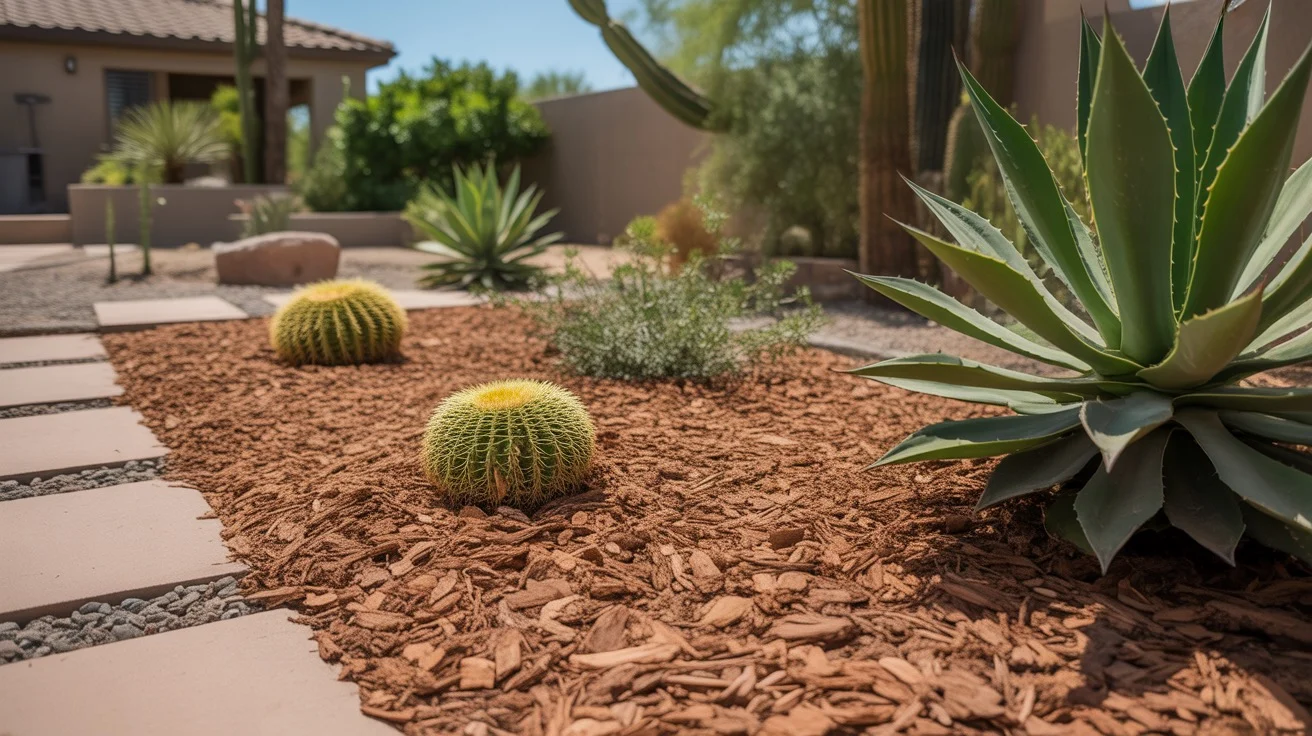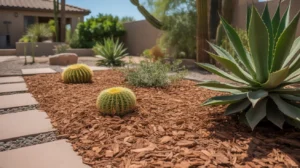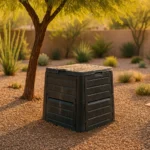Proper mulch management is key to thriving gardens and landscapes in Gilbert’s intense desert climate. Mulch helps regulate soil temperature, retain moisture, suppress weeds, and improve soil structure over time. But to reap the most benefits, you need to choose, apply, and maintain mulch strategically. Here’s how to maximize your mulch in Gilbert.

Select the Right Mulch for Your Needs
The first step is picking a mulch well-suited to your specific yard and goals. In Gilbert, organic mulches like bark, wood chips, straw, and compost are popular for their soil-building properties. They break down gradually, adding nutrients and organic matter. Inorganic options like gravel and river rock are valued for durability and drainage.
Consider your plants, soil type, irrigation setup, and aesthetic preferences. Bark is great for trees and shrubs, while straw suits veggie beds. Rocky mulch complements xeriscapes and succulents. For general use, a medium-textured wood mulch in a natural brown shade is a safe bet.
Whichever you choose, look for quality. Fresh, uniform materials from a reputable source will give better, more consistent results.
Apply a Deep, Even Layer
Aim for a mulch depth of 3 to 4 inches for maximum benefits. Too shallow and you sacrifice weed control and moisture retention. Too deep and you risk trapping excess moisture and smothering roots. Use a measuring stick as you apply to check depth.
Spread mulch evenly across beds, taking care not to pile it against tree trunks or plant stems. Leave a few inches of breathing room to prevent rot and disease. A nice, uniform layer not only functions better but gives beds a tidy, manicured look.

Water Wisely to Maximize Mulch Benefits
In Gilbert’s low desert climate, smart irrigation is vital. Mulch is a terrific water-saving tool, but it works best with wise watering practices. Soaker hoses or drip lines under mulch deliver moisture efficiently right to the root zone. The mulch then helps lock it in.
When watering, account for your mulch layer. Slow, deep irrigation will penetrate the mulch and reach plant roots. Use a moisture meter probe to check soil dampness 3 to 4 inches down and adjust as needed. Avoid frequent, shallow sprinklings that wet only the mulch surface.
With organic mulches, water can sometimes bead up and roll off until the mulch is thoroughly moistened. After laying fresh mulch, water deeply a few times to saturate it and improve absorbency.
Refresh and Rejuvenate as Needed
Over time, organic mulches naturally decompose, enriching and conditioning the soil. This process also means mulch layers gradually get thinner. Plan to top off beds with an additional inch or two of mulch once or twice a year to maintain optimal depth.
If mulch starts looking faded, matted, or moldy, a quick fluffing with a rake can revive it. Simply loosen and turn the top couple inches to aerate and refresh the surface. Avoid over-raking and digging too deep, which can damage shallow plant roots.
Rejuvenate rocky mulches every year or two by scooping the top layer into a sieve and giving it a good shake. This knocks loose dirt and debris through the screen, leaving clean rocks behind to relay.
Monitor and Troubleshoot Issues
While mulch offers many benefits, it can also cause problems if applied or maintained improperly. Watch for these common issues:
- Nitrogen deficiency: As fresh organic mulches break down, they can temporarily deplete soil nitrogen. Watch for yellowing leaves, and apply a nitrogen-rich fertilizer if needed.
- Fungal growth: In shady, humid areas, mulch can sometimes grow unsightly fungus. Rake to aerate the mulch layer and reduce moisture buildup.
- Pests: Some organic mulches may attract termites, roaches, and other pests. Keep mulch away from foundations, and choose inorganic options near structures.
With a little TLC, your Gilbert mulch setup will help your yard look lush and lovely with less water and work. Lay it thick, spread it even, and refresh regularly to keep your mulch game on point!











